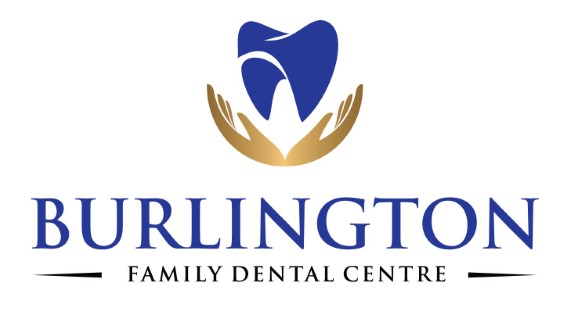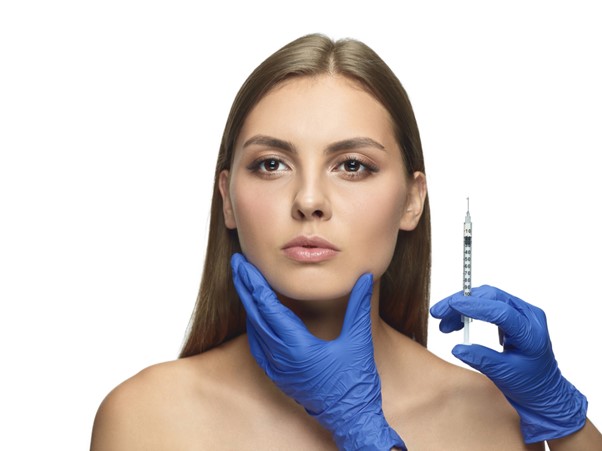Table of Contents
- What is Botox for TMJ treatment?
- Botox Therapy process
- Botox Therapy Side Effects
- Botox Treatment for TMJ Advantages
- How Much Does Botox for TMJ Cost?
- How Dentists Use Botox
- Botox Aftercare
- How to Reduce TMJ Symptoms Naturally
- Can Botox cure TMJ permanently
The TMJ (Temporomandibular Joint) is a small joint in front of the ear. It connects the temporal bone to the mandible. The TMJ is a vital hinge that enables smooth jaw motion. When the TMJ is healthy and well-functioning, one can chew, talk and yawn without discomfort.
TMJ disorders are associated with symptoms like jaw stiffness, clicking noises in your mouth, headaches, earaches, and ear congestion. It might also cause eye strain and pain in your back or neck.
TMJ disorder causes
There are a variety of factors, ranging from jaw trauma to emotional stress, which can contribute to TMJ dysfunction. The leading causes are:
- Malocclusion;
- Stress (overexertion, bruxism);
- Jaw injury (fractures of the facial bones and the jawbone);
- Metabolic and Endocrine disorders;
- Infectious diseases;
- Strenuous exercise;
- Unhealthy habits like nail-biting.
TMJ disorder symptoms
As previously mentioned, TMJ disorder causes unpleasant symptoms. The most common symptoms include:
- Chronic headaches, facial pain, and jaw spasms;
- Crunching or crackling sounds in the jaw;
- Ear pain;
- Submandibular gland swelling;
There are a few ways we can treat TMJ in Burlington, but let’s examine one particular exciting therapy: Botox.
What is Botox for TMJ treatment?
Botulinum toxin type A, or Botox, is consistently impressing researchers with its potential to treat many conditions and diseases. Botox is renowned for its beauty applications, such as breast lifts, lip flips, and wrinkle-reducing procedures.
Recently though, rigorous clinical trials have proven that Botox injections can effectively alleviate the symptoms associated with TMJ disorder. This joint is constantly in movement. It plays an active role in all mouth-related activities and is under pressure daily.
Certain health conditions, injuries, jaw misalignment, and bruxism-induced wear and tear can traumatize the TMJ. That leads to chronic aches and discomfort. In search of a way to soothe these troublesome symptoms, many dentists have turned to a surprising yet highly effective solution: Botox injections.
Let’s explore the use of Botox for TMJ treatment. When considering Botox treatment, it is essential to understand its benefits, risks, and associated costs. Every part of the process should be clear.
Botox Therapy process
Botox therapy is quick and minimally invasive
Botox therapy is a non-surgical, minimally invasive medical treatment that can be performed in the comfort of your dentist’s office. It does not require hospitalization or extended recovery time. All you need to do is book an appointment – it is that simple.
People that come in because they are grinding their teeth, chewing their nightguard, headaches, chronic sore jaw, can’t sleep at night with nightguard, waking up with headaches and so on.
Here are the steps:
Step 1: You schedule and come in for your consultation.
Step 2: A few questions we might ask – have you tried everything else: physio, yoga, seen a physician? Have you had your headaches for a few months now? Where is the pain?
Step 3: We then take some measurements of your masseter muscles, map out the range of jaw movement, measure your bite, and take some photos
Step 4: We then inject in 1 site only.
Botox injections typically take around 30 minutes to administer, with most people needing two or three sessions over a couple of months for optimal results.
The injections are almost painless, but an effective topical anesthetic can make them pain-free. You won’t even feel the needle.
Over the first few days, your Botox treatment will start to take effect as it severs the nerve endings of jaw muscles and minimizes tension. You can expect your TMJ-related pain to ease within the week.
Botox Therapy Side Effects
There are very few side effects due to the nature of the TMJ treatment. Mostly, you would expect to have a bit of temporary bruising around the injection site. Your dentist will go over all of this with you during your consultation.
Botox Treatment for TMJ Advantages
When searching for a remedy to TMJ disorder, you have several options and their respective pros and cons. Botox therapy is one of the easiest and most effective ways to reduce pain quickly without spending hours in a hospital or relying on medication. With Botox injections, you can achieve daily comfort effortlessly. So, here are the main advantages of Botox for TMJ in Burlington:
- Painless;
- Minimally invasive;
- Effective and straightforward;
- Quick and efficient
How Much Does Botox for TMJ Cost?
The cost of Botox treatment for TMJ is about $8 per unit and depends on the severity of TMJ symptoms, the number of injections required, and the duration of therapy. Some people require 50 units per session.
How Dentists Use Botox
Botox serves various purposes beyond aesthetics. What other uses does it have, and how do dentists use it?
- To Alleviate the Symptoms of Bruxism (teeth grinding).
Facial tension can lead to painful and uncomfortable issues from jaw pain and stiffness to migraines and teeth grinding. Bruxism is a condition that not only wears teeth enamel away but can also shatter dental crowns due to the intense pressure put upon them. Ultimately, this can also cause malocclusion (a misaligned bite).
Of course, Botox can not make the facial tension go away completely. Bruxism often stems from psychological issues, physical injuries, or dental problems. It’s necessary to identify the root cause to cure it permanently.
However, Botox can help minimize the negative impact of Bruxism on both your teeth and TMJ. For this, dentists make targeted injections of Botox into specific areas of the masticatory muscles. When these muscle parts become desensitized, they no longer receive messages from the brain. Even if the patient attempts to clench their teeth unconsciously, it won’t work. It will protect the teeth from damage.
- To Relieve Trigeminal Neuralgia Pain (facial nerve pain)
Facial nerve issues also cause spasms. Consequently, this muscular contraction exacerbates the patient’s pain symptoms, negatively impacting their quality of life. Furthermore, healthy muscles are overused for comfort, causing muscular disbalance, which can result in facial asymmetry.
Proper Botox treatment will relax facial muscles and reduce pain by regulating muscle contractions.
- To Fix a Gummy Smile
When a person’s smile reveals their gum line, it is referred to as a gummy smile. Or excessive gingival display. Many people perceive this as an aesthetic flaw and are embarrassed to smile.
A gummy smile can be fixed in various ways, including with the help of Botox. Botox will be especially helpful if the issue is caused by excessive muscle activity, which pulls the corners of the lips up and back too much.
Botox Aftercare
After receiving Botox treatment, give extra care to your body and skin.
Even if the procedure is minimally invasive and doesn’t leave you with fresh wounds, it’s important to remember that micro-wounds caused by the needle are still there.
So, what can you do to reduce the risk of infections or inflammation after receiving Botox injections?
Immediately after, you can apply an ice pack to the affected area while sitting still. Once the topical anesthetic wears off, you may experience mild soreness around the injection site. If you have sensitive skin, it may also become slightly irritated after the procedure. To ensure the Botox does not spread to other areas, you should refrain from rubbing or massaging the injection site several hours after your treatment. Generally, these post-treatment effects will dissipate quickly with no additional assistance.
Although some may feel a slight relief shortly after the procedure, it’s necessary to understand that the results won’t be instant.
After that, please adhere to the following rules:
- Do not use heavy makeup or avoid wearing it altogether for several days after Botox injections;
- Don’t wear a hate or mask that can push at your skin at that specific injection site.
- There will be a small bump where the Botox is, so please refrain from rubbing or massaging the injection site as it can result in Botox spreading to other areas;
- Avoid intense physical activity for a few days following treatment and any physical activity for at least 2 hours;
- After TMJ injections, avoid high temperatures in spas, saunas, even hot tubs, and showers.
There also may be some temporary red spots on your face, just so you are aware of that before attending any dinner parties.
How to Reduce TMJ Symptoms Naturally
When it comes to TMJ, there are some easy ways to reduce discomfort and get the most out of your Botox injections. Here are a few tips that could help you on this journey.
- You know that stress is one of the main causes of muscle tension. Take time for yourself and step away from whatever is causing tension or stress. Yoga and meditation could help you unwind and clear your mind of negative thoughts;
- Don’t slouch! Poor posture contributes to muscle imbalance, which negatively impacts all the joints in your body, including the TMJ.
- Resist the urge to clench your jaw even in stressful situations;
- Pay attention to your jaw muscles and make a conscious effort to relax your mandible as much as possible;
- Stop biting your nails;
- Reduce gum chewing (a habit that’s so hard to break!);
- Avoid sticky and hard foods.
Though it may seem insignificant, even something like chewing gum can lead to the development of TMJ disorders and potentially cause severe headaches. These easy tips will help you stay away from these conditions for as long as possible. And your overall health could benefit from it, too.
Can Botox cure TMJ permanently
While Botox can provide a great deal of relief from pain and daily discomfort for those suffering from TMJ, it is a temporary solution. Botox does not treat the disorder, but serves to reduce the symptoms or effects of it. In order to cure TMJ, the root cause has to be identified and treated.
Jaw pain and stiffness can be sources of distress in day-to-day life. Unaddressed teeth grinding, bad habits, and stress can cause the muscles and joints to tighten, leading to various health issues. Fortunately, there are a lot of solutions to alleviate the symptoms and improve the quality of life. Botox injections are one of them. Botox is already widely used by cosmetologists, surgeons, and dentists and is among the most thoroughly researched drugs in the world. If you suffer from TMJ disorder or experience facial muscle discomfort, discuss with your doctor the possibility of a Botox treatment, it may be what you need.
While Botox for TMJ might not be ideal for everyone, we hope this guide will help you make an informed decision based on your unique circumstances and budget. You should speak with a dentist at Burlington Family Dental Centre and we can offer you free, friendly advice.
More Questions?
If you have any further questions about Botox therapy, get in touch with us or just call us in Burlington ON at (289) 797-2930 to schedule a consultation. We will be happy to answer any questions you have and advise you about what course of treatment might be the best for you.




